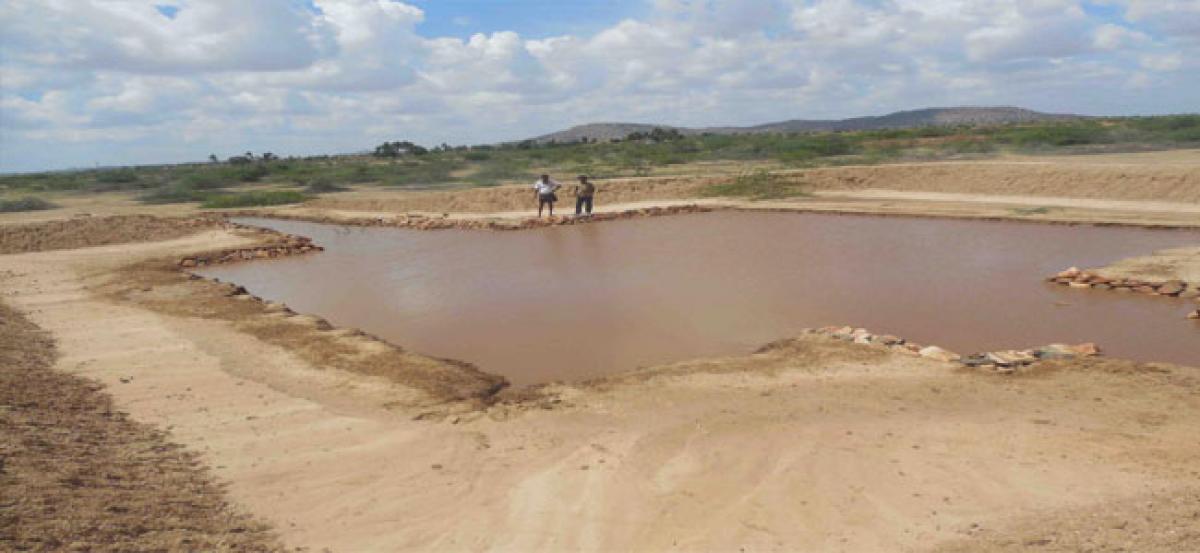Live
- NASA Tracks Five Giant Asteroids on Close Approach to Earth Today
- Pushpa 2 Hits ₹1000 Crore in 6 Days: How It Compares to Other Top Indian Films
- Vivo X200 and X200 Pro Launched in India: Price, Specifications, and Features
- Nitin Gadkari Admits Feeling Embarrassed at Global Summits Over Rising Road Accidents in India
- Comprehensive Review on Indiramma Housing Survey and Welfare Initiatives Conducted via Video Conference
- Jogulamba Temple Records Rs 1.06 Crore Hundi Revenue in 150 Days
- Opposition Slams ‘One Nation, One Election’ Bill as Anti-Democratic; BJP Allies Support the Move
- Celebrate Karthigai Maha Deepam Virtually with Sri Mandir’s LIVE Darshan Experience
- BJP Extends Support to Samagra Shiksha Abhiyan Employees' Strike, Demands Immediate Regularization and Welfare Benefits
- Dr. M. Priyanka Stresses Quality Education, Nutritious Meals, and Cleanliness in Schools
Just In

Farmers in India do a lot of talking about the weather – especially, it seems, when there is no weather in sight. When the land heats up like a furnace and most fields lie fallow, when wells have run dry and the sun taunts from its broiling perch in a cloudless sky, there is no topic more consuming
The kings did not have armies of public works engineers; they provided fiscal incentives to communities and individuals who built water systems. The British changed all this, by vesting the resource with the State and creating large bureaucracies for management
Farmers in India do a lot of talking about the weather – especially, it seems, when there is no weather in sight. When the land heats up like a furnace and most fields lie fallow, when wells have run dry and the sun taunts from its broiling perch in a cloudless sky, there is no topic more consuming – or less certain – than when and how the summer monsoon will arrive. Later it will turn into a thundering elephant. Or it will start as an elephant and then turn into a deer.
Or it will be erratic and annoying right through, like a chicken. In other words, nobody really knows. But still, everybody talks.
India's crucial monsoon rains are expected to be average in 2017. An average or normal monsoon means rainfall between 96 and 104 per cent of a 50-year average of 89 centimetres during a four-month season from June, India's weather office says. Rainfall below 90 per cent of the average is considered a drought.
Even if rains are average, some areas could still have drought. On the other hand, rains of more than 110 per cent of the average would mean an excessive monsoon – not as damaging as drought but potentially hurting yields of lentils and rice.
India supports 15 per cent of the world’s population but possesses only 4 per cent of the world’s water resources.
Despite constructing 4,525 large and small dams, the country has managed to create per capita storage of only 213 cubic meters, a relatively small achievement when compared to Russia’s 6,103 cubic meters, Australia’s 4,733, and China’s 1,111. India is using only 35 per cent of the rainwater it receives. If rainwater harvesting projects are effectively implemented, 65 per cent of the rainwater which is wasted can be used.
Ancient Indians understood the art of water governance. Kautilya’s Arthasastra, written around 300 BC, has details of how tanks and canals are to be built and managed. The key was to clarify the enabling role of the State – the king – and the management role of local communities.
The kings did not have armies of public works engineers; they provided fiscal incentives to communities and individuals who built water systems. The British changed all this, by vesting the resource with the State and creating large bureaucracies for management.
Watershed development is not a new concept in India and a peek into history shows that the people of India have adapted by either living along river banks or by harvesting, storing, and managing rainfall, runoff and stream flows. Most of India’s water management has been at the community level, relying upon diverse, imaginative and effective methods for harvesting rainwater in tanks and small underground storage.
India needs to revive its traditional water harvesting practices. The idea behind watershed development is simple: If people cut fewer trees, increase plant cover on the land, and build a well-planned series of dams and earthen terraces to divert and slow the downhill flow of rainwater, the soil has more time to absorb moisture. The terracing and new vegetation also control erosion, which keeps nutrient-rich topsoil from washing or blowing away, and this in turn boosts the productivity of agricultural land.
Israel has been a role model for the world in matters of water management and India is now actively seeking the country’s help. Israel’s successes were in large part due to the major innovation of drip irrigation. The country has also set the template for reusing wastewater in irrigation. It treats 80 per cent of its domestic wastewater, which is recycled and constitutes nearly 50 per cent of the total water used for agriculture.
Realising its dire predicament decades ago, Israel studied the “water equation” and made itself all but independent from Mother Nature. Israel took 70 years to solve its water problem; India won’t need that long, as it can emulate Israeli advances. But India must summon the political will to act before the water runs out. Changing governance, raising money, and installing technologies all take time and the climatic stresses are mounting fast.
By Moin Qazi

© 2024 Hyderabad Media House Limited/The Hans India. All rights reserved. Powered by hocalwire.com







